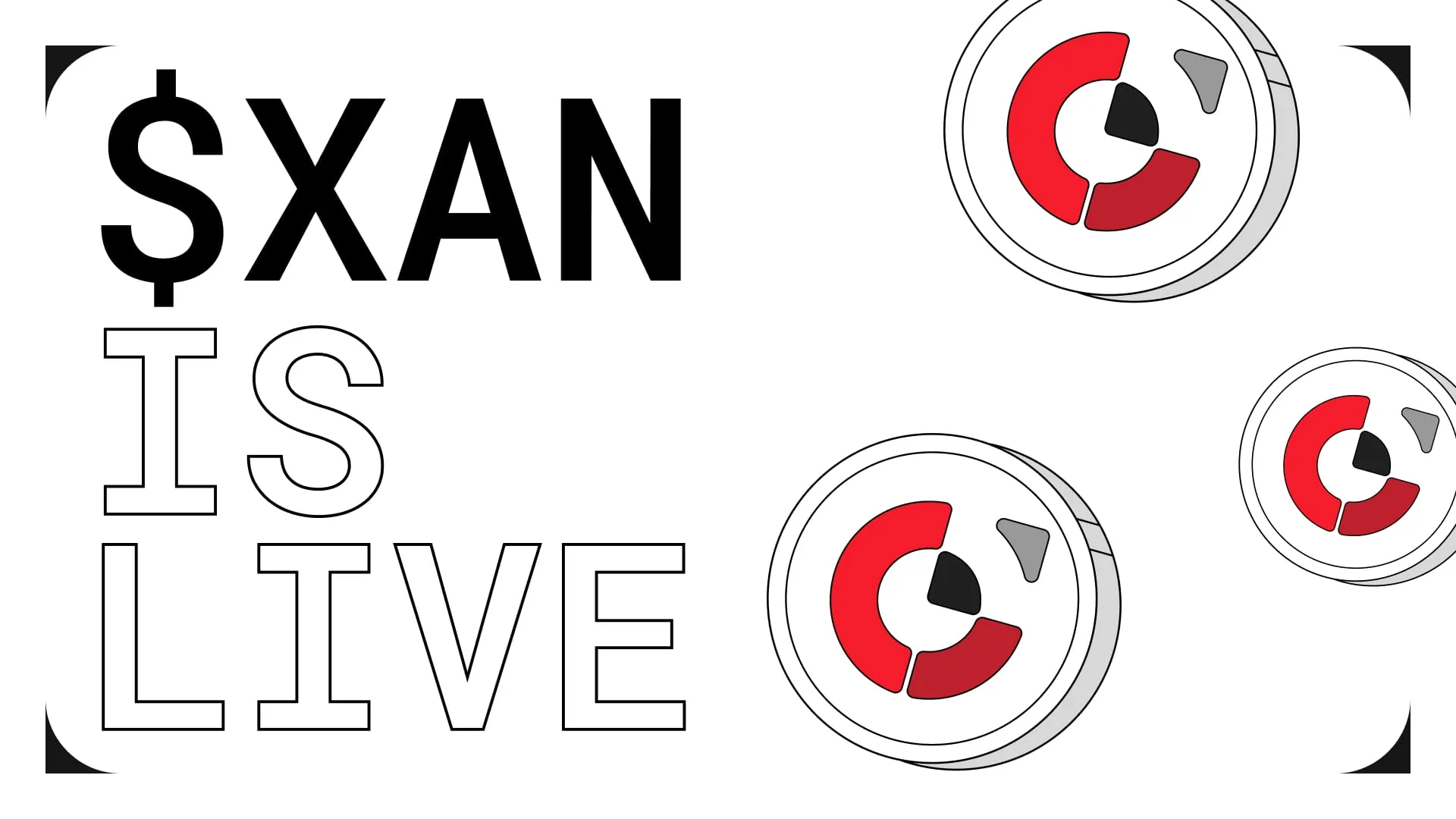A Long-Awaited Milestone in Blockchain Interoperability
The launch of Anoma’s mainnet on Ethereum marks one of the most important developments in blockchain interoperability to date. For years, crypto users and developers alike have struggled with the fragmentation of digital ecosystems — chains running in isolation, liquidity trapped in silos, and bridges plagued by complexity and security vulnerabilities.
Anoma enters the stage with a fresh proposition: an intent-based architecture that allows users to express what they want to do, while the protocol itself handles how it gets done. Instead of forcing participants to navigate multiple bridges and wrapped assets, Anoma simplifies the process, turning blockchain from a set of disconnected islands into a cohesive, interconnected web of digital activity.
With its official debut on Ethereum, Anoma positions itself as a potential operating system for blockchain networks, making the case for a future where decentralized applications (dApps) no longer feel constrained by the boundaries of individual blockchains.
Ready to level up your career? Join our expert-led Online courses in ACCA, HESI A2, ATI TEAS 7, HESI EXIT, NCLEX-RN, NCLEX-PN, and Financial Literacy. At Serrari Ed, we turn potential into achievement. Start your journey today!
What Makes Anoma Different? Intent-Based Architecture
Most interoperability protocols take an infrastructure-first approach — building bridges, relays, or liquidity hubs that connect separate blockchains. While functional, this approach leaves users navigating technical details like wallet compatibility, wrapped tokens, or liquidity pools.
Anoma turns this model upside down by focusing on intent-based design. A user specifies their goal — such as swapping $SOL for $USDC — and the protocol manages execution across chains. This not only reduces friction for end users but also provides developers with a unified framework for deploying applications across multiple networks.
In other words, Anoma doesn’t just link blockchains. It reimagines how blockchain networks interact, making user actions primary and network infrastructure secondary.
This concept resonates with the broader vision of Web3: abstracting away complexity while maintaining transparency and decentralization.
Ethereum as the Launchpad
The decision to launch on Ethereum is both practical and symbolic. Ethereum remains the largest ecosystem for decentralized applications, hosting over 4,000 active dApps and securing more than $60 billion in total value locked across its DeFi protocols, according to DefiLlama.
By anchoring itself to Ethereum, Anoma gains instant credibility and access to one of the most engaged developer and user bases in crypto. It also positions itself as a complement to Ethereum’s scaling ecosystem, which includes Optimism, Arbitrum, and Base — networks that extend Ethereum’s throughput while inheriting its security.
Anoma’s design, however, is not confined to Ethereum and its scaling solutions. It already casts a wide net, connecting to Solana, Bitcoin, and potentially dozens of other chains. This makes Anoma one of the few interoperability projects with a truly multi-chain vision.
The $XAN Token: Governance and Utility
At the core of Anoma’s ecosystem lies the $XAN token, launched as an ERC-20 asset. Unlike purely speculative tokens, $XAN is designed with practical governance and economic functions in mind.
Holders of $XAN will play a role in:
- Protocol governance – Voting on upgrades, ecosystem parameters, and treasury management.
- Economic alignment – Ensuring validators, developers, and users are incentivized to participate.
- Community direction – Steering the future of Anoma through decentralized decision-making.
This governance-first approach aligns Anoma with protocols like Uniswap (UNI) and Aave (AAVE), where token holders have real influence over development.
Early Projects on Anoma
Several projects have already deployed on Anoma to showcase the potential of intent-based architecture:
- HeyElsa – A dApp that enables seamless swaps between assets across multiple chains.
- Orda – Focused on decentralized trading and liquidity aggregation.
- SullySwap – A new-generation cross-chain decentralized exchange designed for retail users.
- AnomaPay – A payment protocol that demonstrates the potential for cross-chain merchant payments.
What makes these projects compelling is not only their functionality but also the reduction of friction for end users. Instead of juggling six wallets, bridges, and wrapped tokens, users interact with apps that “just work.”
Build the future you deserve. Get started with our top-tier Online courses: ACCA, HESI A2, ATI TEAS 7, HESI EXIT, NCLEX-RN, NCLEX-PN, and Financial Literacy. Let Serrari Ed guide your path to success. Enroll today.
Fragmentation in Web3: The Problem Anoma Tackles
Blockchain adoption has grown rapidly since Bitcoin’s creation in 2009, but the industry remains plagued by fragmentation. Every major blockchain — Ethereum, Solana, Avalanche, Cosmos, and others — developed its own ecosystem with unique wallets, consensus models, and liquidity pools.
The result has been a fractured user experience:
- Liquidity is split across dozens of exchanges and pools.
- Developers must rewrite applications for each chain.
- Users face security risks from unreliable bridges, which have been the target of over $2 billion in hacks since 2021, according to Chainalysis.
Anoma’s vision addresses these pain points head-on, offering a pathway to liquidity unification and simplified cross-chain execution.
Chain Interconnection: From Bridges to “Digital Cities”
Anoma frames the future of blockchain not as isolated chains but as connected digital cities. Each chain may have its unique culture, rules, and infrastructure, but they can be interconnected through a shared operating system that prioritizes user intent.
This metaphor resonates with developers and institutions alike. Instead of constantly building temporary bridges, Anoma proposes a scalable, interoperable architecture that scales with the growing demands of global blockchain adoption.
Developer Benefits: Build Once, Deploy Everywhere
An often-overlooked group in blockchain fragmentation is developers. Traditionally, building cross-chain applications has required significant rewrites, specialized infrastructure, or reliance on costly middleware.
Anoma flips the script by offering a unified development environment. Developers can build a single application that runs across Ethereum, Solana, Bitcoin, and potentially many other networks without needing to compromise user experience.
This “build once, deploy everywhere” model not only reduces cost and time but also attracts new talent to the space. It mirrors the success of earlier computing revolutions, where operating systems unified fragmented hardware.
The Broader Market Context
The timing of Anoma’s launch is significant. Blockchain interoperability is now considered one of the industry’s critical frontiers, with competitors like Cosmos IBC, Polkadot, and LayerZero all vying for dominance.
Each solution has strengths but also limitations:
- Cosmos IBC offers mature cross-chain messaging but is limited largely to Cosmos-based chains.
- Polkadot provides parachain interoperability but requires chains to adopt its shared security model.
- LayerZero enables generalized messaging but relies on external oracle and relayer systems.
Anoma differentiates itself through its intent-based philosophy, shifting the burden away from infrastructure and onto a design that prioritizes user goals.
Potential Use Cases for Anoma
With its architecture and token economy, Anoma could unlock multiple real-world applications:
- Decentralized Finance (DeFi) – Seamless liquidity sharing between Ethereum and Solana.
- Payments – Merchants accepting cross-chain stablecoins through AnomaPay.
- NFT Markets – Users trading NFTs across chains without manual bridging.
- Institutional Adoption – Banks or asset managers deploying tokenized assets across multiple blockchains.
The versatility of Anoma’s design gives it potential relevance far beyond retail trading.
Risks and Challenges
While Anoma’s vision is ambitious, several challenges lie ahead:
- Security – Cross-chain systems are frequent hacker targets, making Anoma’s architecture a test case for robustness.
- Adoption – Success depends on developers and institutions embracing Anoma as their interoperability solution.
- Competition – Rivals like Cosmos, Polkadot, and LayerZero have first-mover advantages and established ecosystems.
- Market Conditions – With crypto markets prone to volatility, long-term traction requires resilience.
Nevertheless, Anoma’s fresh approach offers a compelling alternative at a moment when user trust in bridges has weakened.
Conclusion: A Step Toward the Unified Blockchain Future
The mainnet launch of Anoma on Ethereum represents a pivotal moment in the quest for blockchain interconnection. By centering design on user intent, introducing the $XAN governance token, and delivering developer-friendly infrastructure, Anoma has positioned itself as a serious contender in the interoperability race.
If successful, it could usher in a future where blockchains act more like connected digital cities rather than isolated networks — fulfilling the promise of Web3 as a truly seamless and global digital economy.
Ready to take your career to the next level? Join our Online courses: ACCA, HESI A2, ATI TEAS 7 , HESI EXIT , NCLEX – RN and NCLEX – PN, Financial Literacy!🌟 Dive into a world of opportunities and empower yourself for success. Explore more at Serrari Ed and start your exciting journey today! ✨
Track GDP, Inflation and Central Bank rates for top African markets with Serrari’s comparator tool.
See today’s Treasury bonds and Money market funds movement across financial service providers in Kenya, using Serrari’s comparator tools.
Photo source: Google
By: Montel Kamau
Serrari Financial Analyst
2nd October, 2025
Article, Financial and News Disclaimer
The Value of a Financial Advisor
While this article offers valuable insights, it is essential to recognize that personal finance can be highly complex and unique to each individual. A financial advisor provides professional expertise and personalized guidance to help you make well-informed decisions tailored to your specific circumstances and goals.
Beyond offering knowledge, a financial advisor serves as a trusted partner to help you stay disciplined, avoid common pitfalls, and remain focused on your long-term objectives. Their perspective and experience can complement your own efforts, enhancing your financial well-being and ensuring a more confident approach to managing your finances.
Disclaimer: This article is for informational purposes only and does not constitute financial advice. Readers are encouraged to consult a licensed financial advisor to obtain guidance specific to their financial situation.
Article and News Disclaimer
The information provided on www.serrarigroup.com is for general informational purposes only. While we strive to keep the information up to date and accurate, we make no representations or warranties of any kind, express or implied, about the completeness, accuracy, reliability, suitability, or availability with respect to the website or the information, products, services, or related graphics contained on the website for any purpose. Any reliance you place on such information is therefore strictly at your own risk.
www.serrarigroup.com is not responsible for any errors or omissions, or for the results obtained from the use of this information. All information on the website is provided on an as-is basis, with no guarantee of completeness, accuracy, timeliness, or of the results obtained from the use of this information, and without warranty of any kind, express or implied, including but not limited to warranties of performance, merchantability, and fitness for a particular purpose.
In no event will www.serrarigroup.com be liable to you or anyone else for any decision made or action taken in reliance on the information provided on the website or for any consequential, special, or similar damages, even if advised of the possibility of such damages.
The articles, news, and information presented on www.serrarigroup.com reflect the opinions of the respective authors and contributors and do not necessarily represent the views of the website or its management. Any views or opinions expressed are solely those of the individual authors and do not represent the website's views or opinions as a whole.
The content on www.serrarigroup.com may include links to external websites, which are provided for convenience and informational purposes only. We have no control over the nature, content, and availability of those sites. The inclusion of any links does not necessarily imply a recommendation or endorsement of the views expressed within them.
Every effort is made to keep the website up and running smoothly. However, www.serrarigroup.com takes no responsibility for, and will not be liable for, the website being temporarily unavailable due to technical issues beyond our control.
Please note that laws, regulations, and information can change rapidly, and we advise you to conduct further research and seek professional advice when necessary.
By using www.serrarigroup.com, you agree to this disclaimer and its terms. If you do not agree with this disclaimer, please do not use the website.
www.serrarigroup.com, reserves the right to update, modify, or remove any part of this disclaimer without prior notice. It is your responsibility to review this disclaimer periodically for changes.
Serrari Group 2025












